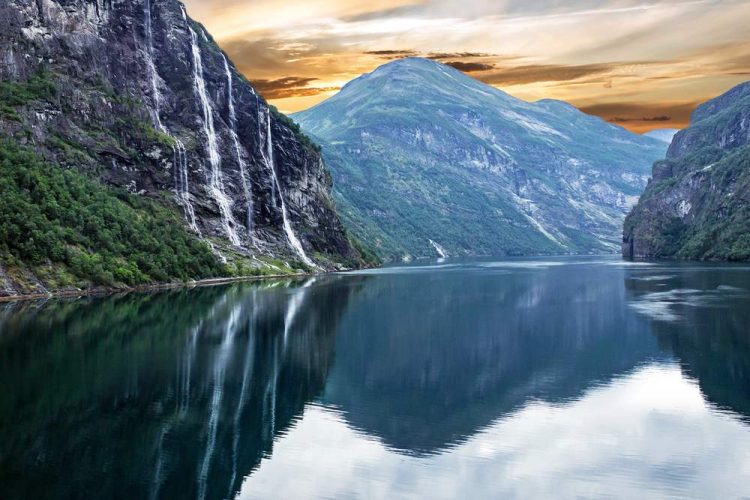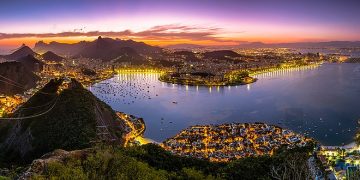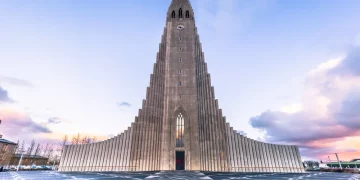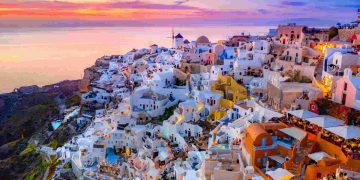Introduction
The fjords of Norway are some of the most iconic and awe-inspiring landscapes on the planet. Known for their breathtaking beauty, the fjords are deeply intertwined with Norwegian culture, history, and everyday life. Carved by glaciers over millions of years, these steep, dramatic inlets offer more than just scenic views. They have shaped the way the Norwegian people live, work, and interact with nature. This article delves into the natural beauty of the fjords, their cultural significance, and the ways in which local communities coexist with these majestic landscapes. We will also explore the best fjord destinations to visit, and offer travel tips on how to explore this stunning region while respecting local customs and traditions.
The Natural Beauty of Norway’s Fjords
Norway is home to some of the world’s most stunning fjords, with their majestic mountains rising sharply from the water’s edge, creating a spectacular sight that has captivated travelers and locals alike for centuries. These fjords, long recognized for their dramatic beauty, are created when glacial ice carves out deep valleys that are then flooded by the sea. The result is a landscape of steep cliffs, cascading waterfalls, and serene waters, often surrounded by lush greenery and snow-capped peaks.
One of the most striking features of Norway’s fjords is their size and depth. Some fjords, like the Geirangerfjord, are incredibly deep, with water that plunges hundreds of meters into the Earth’s crust. The fjords also vary in size, from large, expansive waterways that stretch for miles to narrow, secluded inlets that provide a sense of tranquility and isolation. The Sognefjord, for example, is the longest and deepest fjord in Norway, stretching 205 kilometers inland and diving to depths of over 1,300 meters.
The dramatic scenery of the fjords is complemented by the seasonal changes that transform the landscape throughout the year. In the summer, the fjords are lush and green, with wildflowers dotting the hillsides and the waters glistening under the midnight sun. In winter, the landscape becomes more austere, with snow covering the mountain peaks and ice formations on the water’s surface. These seasonal shifts contribute to the allure of the fjords, making them a year-round destination for nature lovers and adventure seekers.
The fjords are also home to diverse wildlife, with seals, otters, and seabirds often seen along the shoreline. The waters themselves are rich with fish, and the surrounding forests are teeming with life, making it a paradise for birdwatchers, wildlife enthusiasts, and photographers.
The Cultural Significance of Fjords in Norwegian Traditions and History
The fjords of Norway have been an integral part of the country’s history and culture for centuries. For the Norwegian people, these waterways are not just natural wonders—they are vital to their way of life. From early settlement to modern-day fishing communities, the fjords have shaped the identity and livelihoods of local inhabitants.
Historically, the fjords were essential for transportation and trade. In a time before modern roads and railways, the fjords served as natural highways, connecting remote coastal villages with larger towns and cities. This made fishing, trade, and communication between communities much easier. The fjords were also a source of sustenance, with fishing being a key industry that has supported local economies for generations. The clear waters of the fjords are rich in marine life, making them a prime location for fishing, particularly for species like cod, herring, and salmon.
In addition to fishing, the fjords have played a significant role in Norwegian mythology and folklore. The dramatic landscape and powerful forces of nature were often seen as representations of the gods, and many traditional tales feature the fjords as mystical places. Viking sagas also describe the fjords as a place of refuge, with their narrow inlets providing shelter from storms and potential invaders. The fjords’ connection to Viking history is a key aspect of Norwegian heritage, and their cultural significance continues to this day.
Norwegian architecture and way of life have also been shaped by the fjords. Many traditional houses are built to blend seamlessly with the natural landscape, with steep roofs designed to shed snow in the winter months. The use of wood from local forests is another important aspect of Norwegian building traditions, and the buildings in fjord-side villages often have a distinctive red or yellow color that contrasts beautifully with the surrounding greenery and water.
Over the years, the fjords have also become a symbol of Norway’s national identity. The stunning landscapes of the fjords are often used in promotional materials, representing the country’s commitment to preserving its natural beauty and cultural heritage. The fjords have also become a point of pride for many Norwegians, who view them as symbols of resilience and connection to nature.

Best Fjord Destinations to Visit: Geirangerfjord, Sognefjord, and More
Norway’s fjords are scattered throughout the country, and there are many stunning locations to explore. While all of Norway’s fjords offer their own unique charm, some stand out for their breathtaking beauty and cultural significance. Below are some of the best fjord destinations to visit in Norway.
- Geirangerfjord
One of the most famous fjords in the world, Geirangerfjord is a UNESCO World Heritage Site and a must-visit for anyone traveling to Norway. Known for its towering cliffs, cascading waterfalls, and crystal-clear waters, Geirangerfjord is a paradise for nature lovers. The fjord stretches for about 15 kilometers and is surrounded by snow-capped peaks, making it a perfect destination for hiking, kayaking, and photography. One of the most popular viewpoints is Dalsnibba, which offers panoramic views of the fjord and the surrounding landscape. - Sognefjord
The Sognefjord is the longest and deepest fjord in Norway, stretching over 200 kilometers inland. It is often referred to as the “King of the Fjords” and offers visitors a truly diverse experience. The fjord is surrounded by steep cliffs, lush forests, and picturesque villages that dot the shoreline. The Sognefjord is also home to the Jotunheimen National Park, which offers some of the best hiking trails in the country. Visitors can also take boat tours, visit the Nærøyfjord (a UNESCO World Heritage Site), or explore the charming town of Flåm, which is famous for its scenic railway line. - Hardangerfjord
Hardangerfjord is another of Norway’s most beautiful fjords, located in the western part of the country. Known for its dramatic waterfalls, orchards, and mountain peaks, Hardangerfjord is a popular destination for hiking, fishing, and cultural experiences. The area is famous for its apple orchards, which produce some of the best apples in Norway. The fjord is also home to the Hardangervidda National Park, which is ideal for wildlife enthusiasts. - Lofoten Islands
While not technically a fjord, the Lofoten Islands offer some of the most stunning coastal scenery in Norway. Located above the Arctic Circle, the Lofoten Islands are known for their rugged mountains, pristine beaches, and dramatic fjords. The area is also rich in history, with several traditional fishing villages where visitors can experience authentic Norwegian culture.
How Local Communities Live in Harmony with the Fjord Landscapes
The local communities living along the fjords have a long history of adapting to the challenges posed by these dramatic landscapes. The fjords’ steep terrain and isolated locations have meant that local populations have had to find ways to live in harmony with nature, preserving their way of life while also respecting the environment.
Fishing remains a vital industry in many fjord-side communities, with local fishermen using traditional methods passed down through generations. In recent years, eco-tourism has also become an important part of the local economy, with visitors coming to explore the fjords through boat tours, hiking, and wildlife watching.
Many fjord-side communities also embrace sustainable practices, such as using renewable energy sources like hydropower and geothermal energy. The region’s commitment to sustainability is evident in the local architecture as well, with many buildings designed to minimize their environmental impact and blend into the natural surroundings.
Travel Tips for Exploring the Fjords While Respecting Local Culture
When exploring the fjords of Norway, it is important to respect both the environment and the local communities that call these stunning landscapes home. Here are a few travel tips to keep in mind:
- Respect Nature: Norway’s fjords are delicate ecosystems, so be mindful of your environmental impact. Stick to marked trails, avoid disturbing wildlife, and take care not to litter.
- Support Local Communities: When visiting fjord-side villages, make an effort to support local businesses by shopping for handmade crafts, dining in local restaurants, and staying in locally owned accommodations.
- Respect Local Traditions: Many of the fjord-side communities have deep cultural ties to the land, so be sure to respect local traditions and customs. This might include understanding local fishing practices, participating in cultural festivals, or learning about the history of the area.
- Travel Responsibly: The popularity of Norway’s fjords has increased in recent years, so consider visiting during off-peak seasons to reduce the strain on local infrastructure and the environment. Additionally, opt for eco-friendly transportation options like electric boats and public transportation when possible.
Conclusion
The fjords of Norway are more than just beautiful landscapes—they are an integral part of the country’s identity and culture. From the historic significance of the fjords in shaping local life to the breathtaking beauty of the scenery itself, the fjords offer a unique opportunity to connect with nature and experience the traditions of the Norwegian people. Whether you are visiting the iconic Geirangerfjord, hiking through Sognefjord, or exploring the rugged coastline of the Lofoten Islands, Norway’s fjords provide a rich and rewarding travel experience that is steeped in natural and cultural beauty.





















